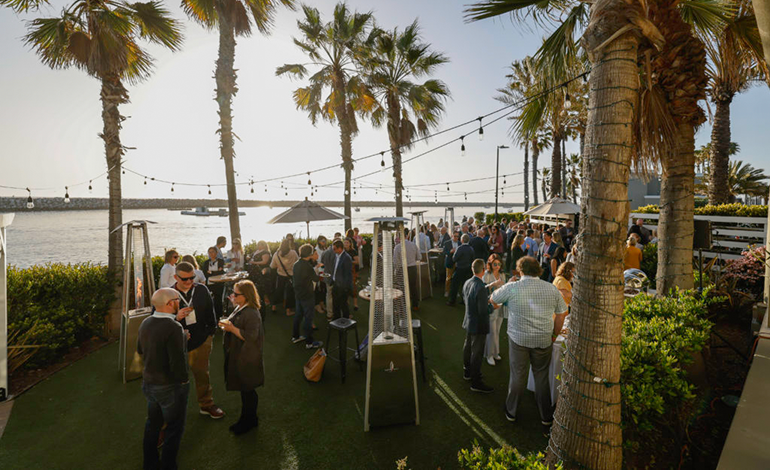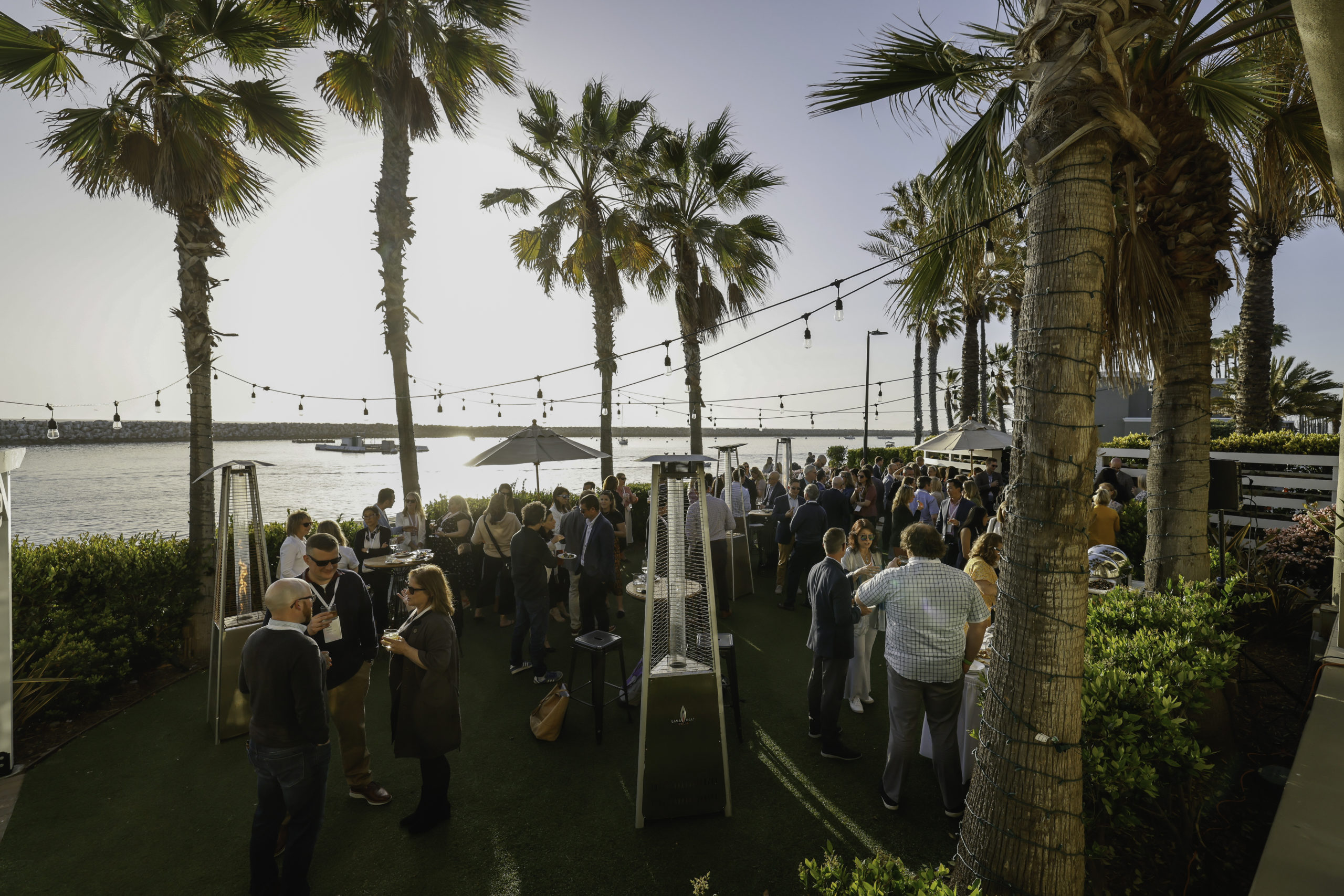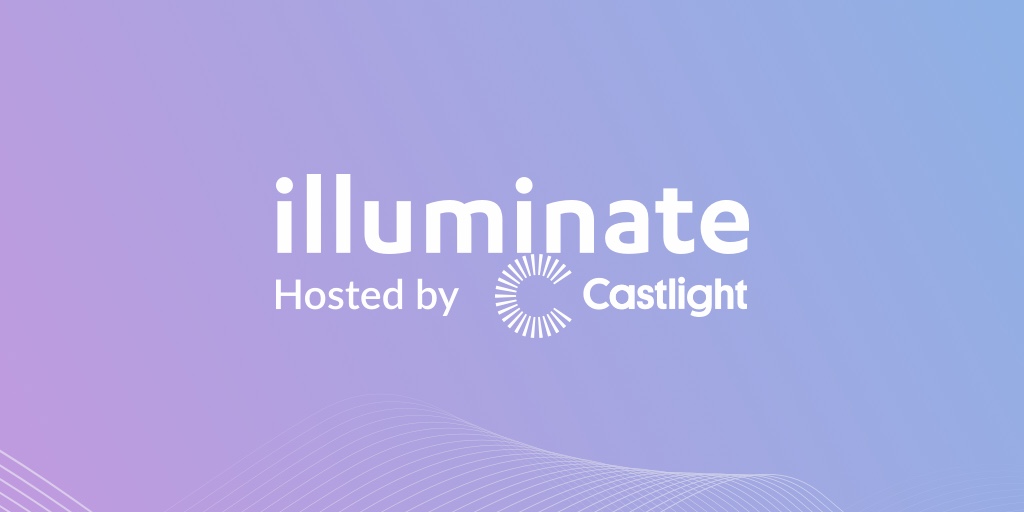After many months of planning and anticipation, Illuminate 2022: Workforce Health, Reimagined—Castlight’s inaugural thought leadership summit—arrived. We are thrilled we could bring together some of the brightest minds in employee benefits and healthcare to mingle, participate in an array of fun activities, and discuss some of the most pressing health and wellbeing issues affecting the workforce today.
Here are some highlights from our time in beautiful Redondo Beach.
Leading Up to the Main Event: Exercise, Relaxation, and Mingling
Many of our guests started arriving Monday afternoon. Representatives from REI took some kayaking and paddle boarding on the Pacific while other guests decided to ride bikes on an oceanside trail that allowed them to see neighborhoods like Hermosa Beach, Manhattan Beach, and Marina Del Rey.

Later in the afternoon, many of the “Illuminaters” met by the poolside for cocktail hour, where they got to reunite with colleagues and peers and make new connections, too.
On Tuesday morning, some early risers participated in yoga, running, and speed walking then headed over to the ballroom for breakfast, coffee, and a day full of Illuminating sessions.
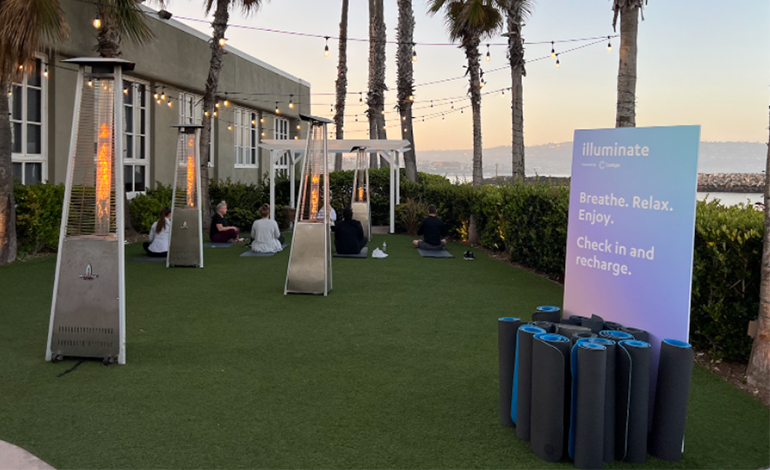
Below are some of the key takeaways from the sessions.
An Intimate Fireside Chat with Mel Robbins
After some insightful words from Castlight CEO Maeve O’Meara and Vera Whole Health Founder and CEO Ryan Schmid, we got to hear from the impressive Mel Robbins, a leading voice in personal development and transformation, international best-selling author, host of Audible’s #1 podcast, and more.

Mel walked us through two of the rules she lives by (which are also the names of her books)—The 5 Second Rule and The High 5 Habit—and provided some invaluable advice, including:
- When you want to do something, count down from five, then just do it. Want to get out of bed earlier? Five, four, three, two, one—up and at ‘em. Want to go for a run? Five, four, three, two, one—lace up your sneakers and hit the road. If you go past five seconds, your brain will start to contaminate your thoughts and will kill your motivation to act.
- To motivate others, express your appreciation more. Each day, send someone a quick note about something small they did and how it made a difference. Now more than ever, people need to hear that they’re appreciated.
- Three hours before bed, stop working. Two hours before, stop eating. One hour before, stop screen time. This is Mel’s nighttime routine, and she swears by it.
- High five yourself in the mirror each morning—after a little while, you’ll feel a positive change in both your mind and energy.
Can Data Drive the Future of Primary Care?
In order for primary care to be the true quarterback, a patient’s entire health and wellbeing can’t rest solely on the shoulders of the primary care physician (PCP). A team-based approach, one where the patient has an entire care team at their fingertips—an MD, nurses, behavioral health specialists, health coaches, and so forth—will be more effective, but only if all providers have an up-to-date 360-degree view of the patient’s health. Each one needs to be able to easily access and understand what’s going on with the patient. The deeper the data integration, the higher the value the patient receives, and that will help build patient trust. These days, care has become so transactional—the number one thing we need to get back is trust.
Employee Benefits Has Finally Gotten Attention of the C-Suite—How Do We Keep It?
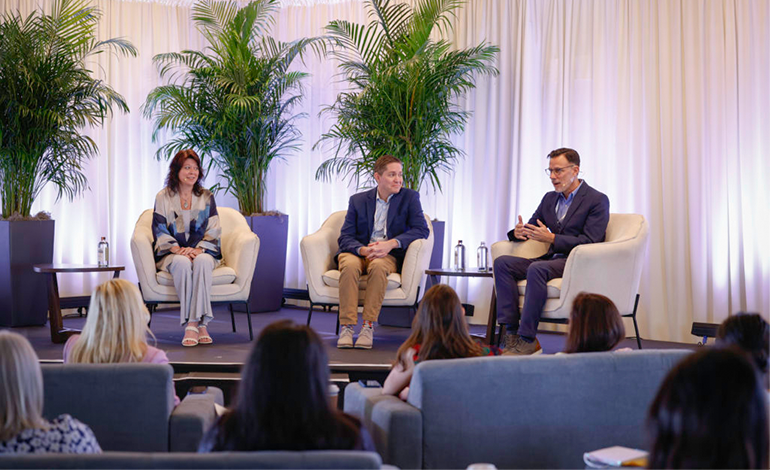
Employee benefits were slowly gaining priority with company leadership prior to COVID-19, but the pandemic expedited the process. In a matter of weeks, employers had to figure out how to guide their people through an unprecedented global health crisis to keep them safe and healthy. The importance of employee health and wellbeing was clearer than ever. To ensure members of the C-suite will continue considering employee benefits an integral part of their workforce strategy, our panelists recommended a few things for benefits leaders:
- Present more than cost data. Executives react to data—if the only data you give them pertains to cost, that’s what they’re going to react to.
- Make sure you have a seat at the table at HR leadership team meetings. The more visible you are to them, the better.
- Find out which executives (the CHRO, the CFO) influence your CEO and get them on board with your strategy first.
- Learn what your CEO is into—their goals, their personal beliefs, what they’re passionate about. The more you understand and speak their “language,” the more they’ll listen.
The Elephant in the Room: COVID’s Impact on The Cost of Care
During the early months of the pandemic, millions of Americans deferred preventive care. And while preventive care utilization has bounced back, we’ll unfortunately see the adverse effects of these pandemic-driven healthcare decisions for years to come. Our panelists discussed many of the findings in Castlight Health’s new 2022 Workforce Health Index, including that employers may face a new wave of healthcare expenses if top cost drivers like musculoskeletal (MSK) and behavioral health are left unaddressed.
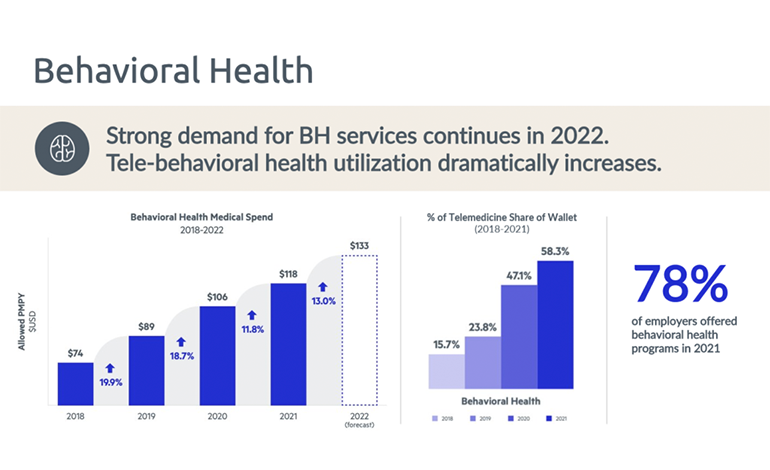
Risk and Reward: The Case for Value-Based Care in the Commercial Market
To apply a value-based model to the commercial population, providers must be willing to transition from a solo to a team-based approach. Value-based care changes how a physician thinks about a patient and the responsibility they have to the patient, so switching from fee-for-service to value-based isn’t as simple as just deciding to do it. It requires changing both the business model and mindset.
It’s also a tricky task because, in general, the system was set up to reward the fee-for-service model, not the value-based model. With value-based, PCPs have to manage more logistics for patients, and that means there needs to be an increased capacity of providers—not just PCPs, but other providers like the ones mentioned above in the Primary Care session section. Ultimately, value-based care is worth it long-term because it provides a holistic relationship with patients, leading to improved outcomes and cost savings.
America’s Vulnerable Populations Live Inside (Not Just Outside) Your Workforce
In a report published in 2021, Castlight found that 27% of commercially-insured individuals face at least one barrier to care driven by social determinants of health (SDoH). At Illuminate, our panelists discussed that, even if employers realize there are vulnerable populations in their workforce, they usually don’t know where the vulnerabilities are—and that’s typically because employee data isn’t mined in a way that provides the employer with these insights. Being able to pass on race and salary data to their vendors would be a home run.
In addition, it’s imperative for employers to talk to their employees to better understand them and what they need. Are they seeking care? If no, why not? What are the barriers? Surveying the population is a great way to find out this useful information, but to start off, employers should have open conversations with their employees to discover their most and least valued benefits and needs and why.
The Cancer Crisis in the Workplace: What Every Employer Needs to Know
Cancer care is complex—employees and their families need support navigating every stage of the cancer continuum: prevention, screening, diagnosis, treatment, and recovery/survivorship or end-of-life care. Unfortunately, the current state of cancer benefits doesn’t support all the phases. And while it’s not realistic for employers to provide unique cancer care solutions for each individual, homogeneous solutions also won’t suffice. Each type of cancer—and each cancer journey—is so different.
Employers can’t solve this on their own, but our panelists suggested employers partner with care delivery organizations to experiment with new cancer care payment models. There are all sorts of different ways to change reimbursement to better meet the needs of employees (and their family members) who are diagnosed with cancer. Ultimately, the bottom line is: the earlier the individual receives care, the better—because the best chance to cure is the first chance.
A Seaside Reception to Wrap Up the Day
We ended an amazing day oceanside, with some beverages and delicious bites to eat (including a raw bar)! We had such a great time hosting Illuminate 2022. Stay tuned for more brilliant insights in the coming months.
